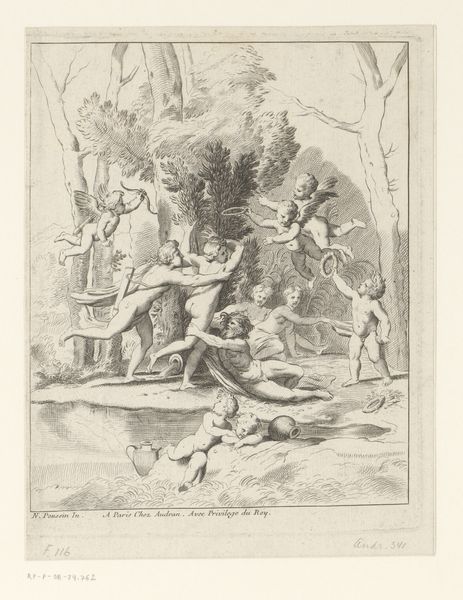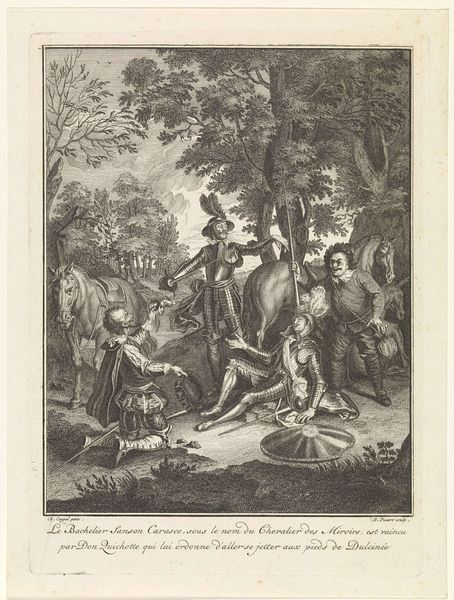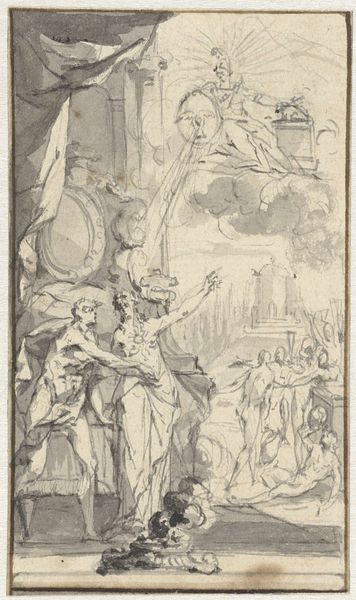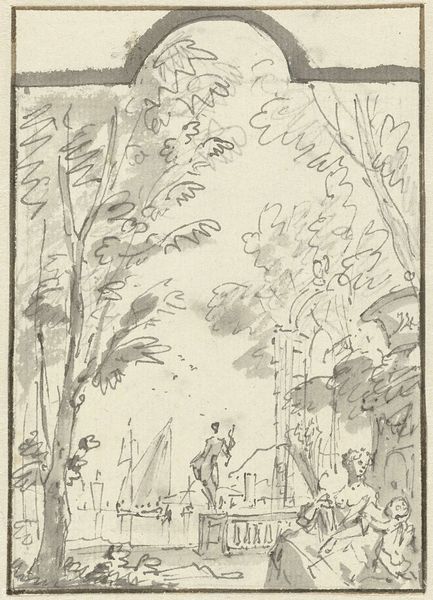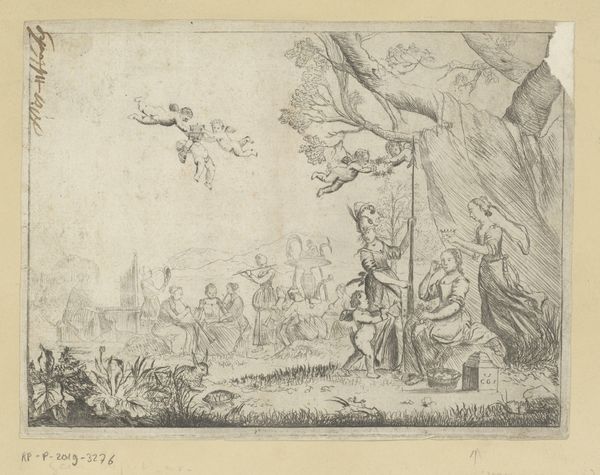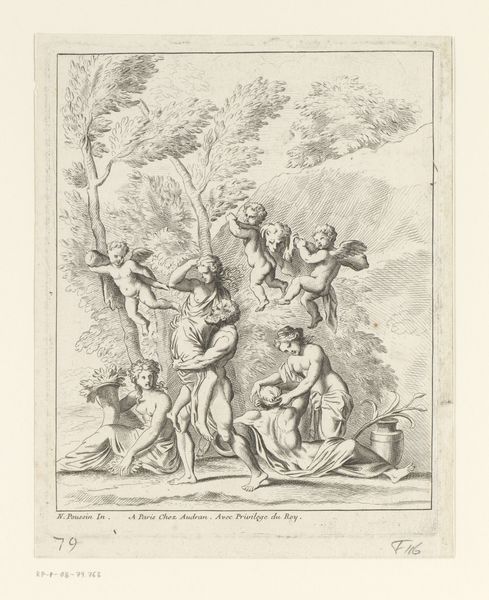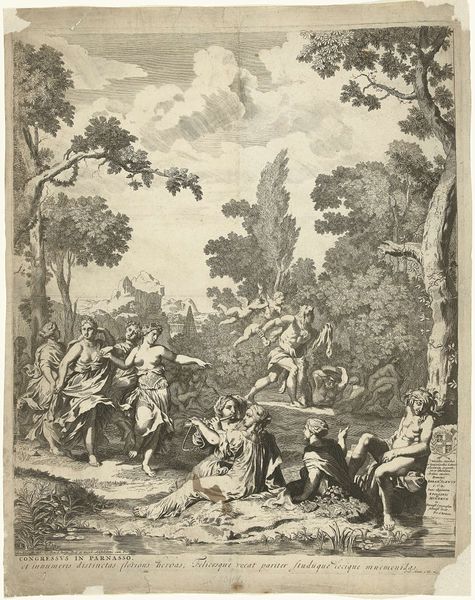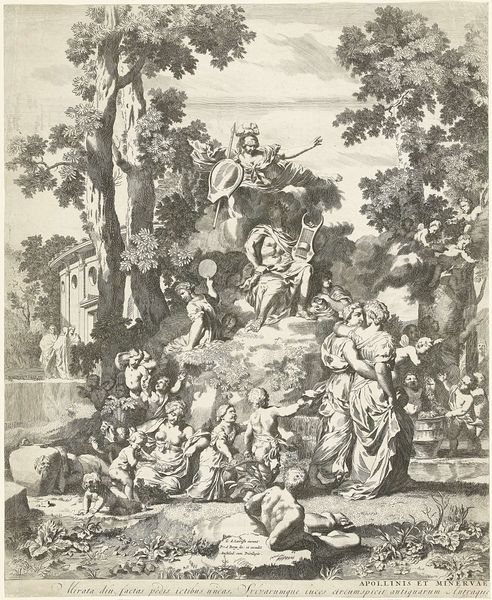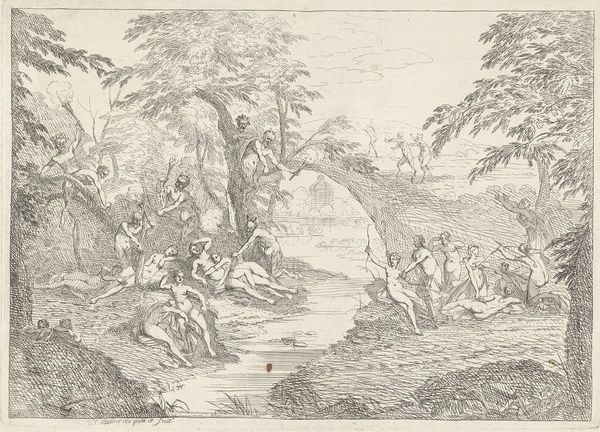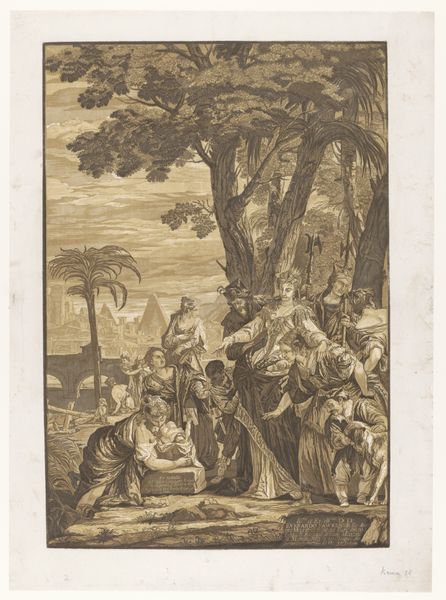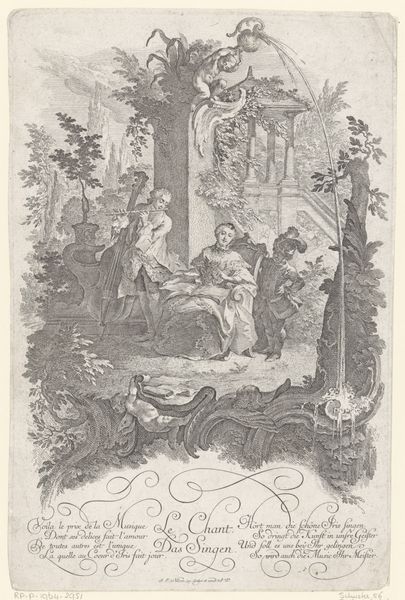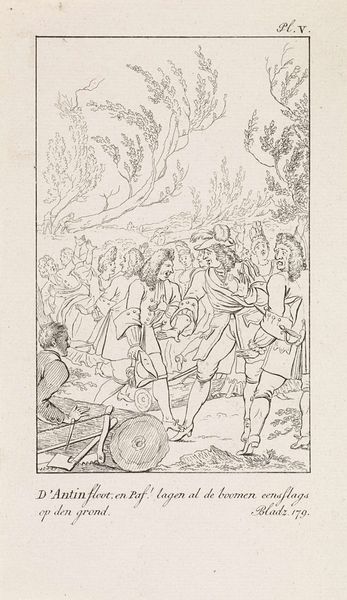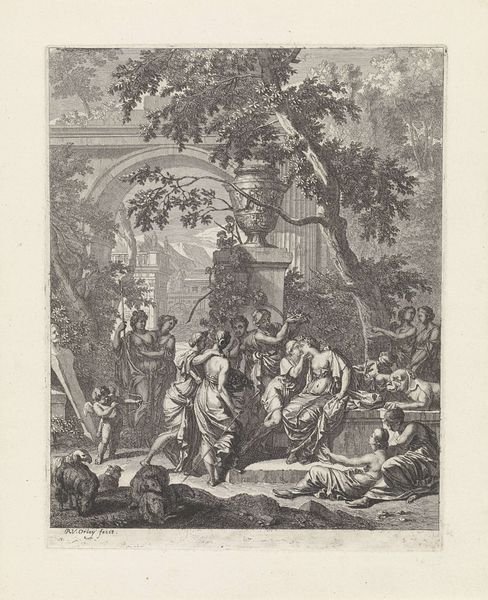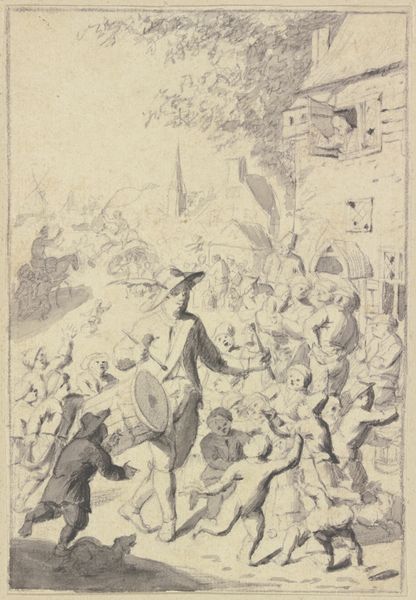
drawing, ink
#
drawing
#
allegory
#
baroque
#
landscape
#
figuration
#
ink
#
history-painting
#
academic-art
Dimensions: height 263 mm, width 202 mm
Copyright: Rijks Museum: Open Domain
Curator: This is an allegorical drawing by Johann Heinrich Keller, made in 1749. It employs ink on paper. What strikes you first? Editor: A subdued, almost mournful atmosphere. The limited tonal range, the wispy lines—it all lends a certain melancholy to what might otherwise be a triumphant scene. Curator: The composition itself is quite studied. Observe the grouping of figures on the left, balanced by the central figures enacting some kind of rite. The artist’s deliberate use of academic perspective guides our eye. Consider, too, how the landscape elements are employed to frame and elevate the narrative. Editor: I find myself wondering about the implications of that dynamic. What’s being negotiated here, between these male figures bestowing a frond of palm leaves, that’s deemed worthy of witnessing and memorializing by this solemn assembly? Who has access to such events? Whose voices are excluded? Curator: The allegory presents an idealized, generalized history. The subjects are timeless, archetypal rather than individual portraits. Note the classical robes. Editor: Timeless for whom? Idealized by whom, and at whose expense? It is always worth looking at the social underpinnings of that Baroque idealism, and acknowledging who had access to shaping historical memory and cultural identity at that moment. Curator: Surely one must acknowledge the skillful rendering of depth, and the way the light catches on the figures? These are techniques indicative of a very particular kind of artistic training. Editor: I can appreciate Keller’s skillful handling of the medium, while simultaneously asking what purposes that skill served and for whose benefit. The languid posture and downcast glance on some of the women to the left, for example, raise crucial questions about agency. Curator: Thank you for those provocative viewpoints. The intersection of art and socio-historical contexts can provide enriching discourse. Editor: Likewise, appreciating formal elements such as line, shadow, and light opens a pathway for understanding narrative perspective and its reception.
Comments
No comments
Be the first to comment and join the conversation on the ultimate creative platform.
